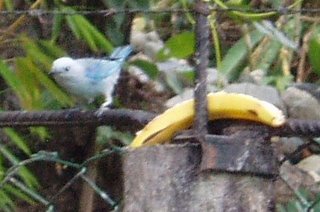Alone on the World?
No, not exactly. Not even in Panama and we are not even the only investors in Mariato district.
During our first visit, we negotiated with a Señor Remigio, who wanted to sell 47 ha. At that time he did not go lower than 17,500 US/hectare and he wanted to sell it all. Well, since we do not have a million to invest, we looked elsewhere. Today we heard that he did manage to sell to an Austrian investor for 16,500 USD/ha. That is still about 750,000 USD and much more than we can afford. But good for him.
There is also an American who is investing in Veraguas. I really couldn’t help overhearing him in Clarocom café since he seemed to think he had to shout in his phone to make himself heard in the US.
Somewhere else in the district a plot of 500 hectare, initially bought by Swiss people for reforestation with teak, has now been sold to a Norwegian who is going to build a golf club. Apparently the area wasn’t good for teak at all (makes you wonder whether those Swiss were stupid or played some game to make money).
We also heard that a french couple, who already worked in eco-tourism in the Dominican Republic, have settled on Gobernadora Island.
Are we afraid of the competition? Not at all, most of it isn’t competition in the real sense anyway. Most investors buy land, subdivide it in smaller plots they prepare for construction and then sell those plots on. This appears to go a lot slower than people want you to believe.
Again, when we were in Mariato in January, one guy had sold two plots: one to himself and one to his brother. Now, half a year later, he has sold another one.
OK, there is a lot of money coming in when you sell a lot (they go for about 65,000 USD) but the costs are quite high as well. Getting electricity to his plot costed about 20,000 USD. So I doubt he will be a millionaire after having sold his 20 plots.
The French couple are far away on an island, so we could probably collaborate rather than compete. When all is said and done, it appears that the Peace Corps is the most active organisation in ecotourism here. Peace corps is trying to help local communities to take advantage from the rising number of tourists by helpoing them to provide the services tourists are looking for.
More about them soon!
p.s. It should now be possible for everybody to make comments direct.



